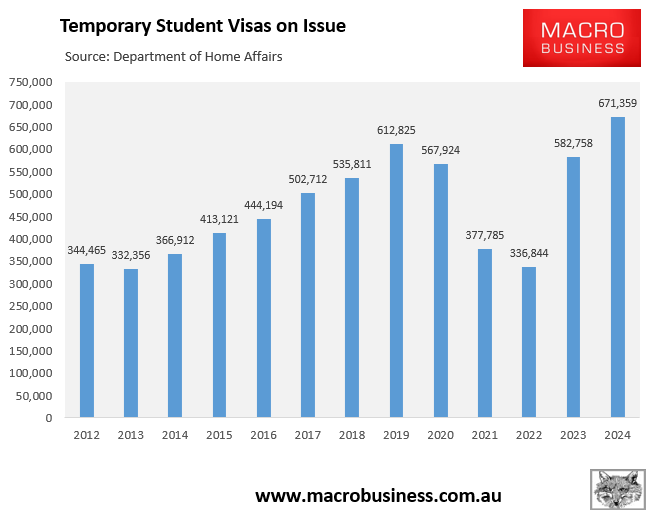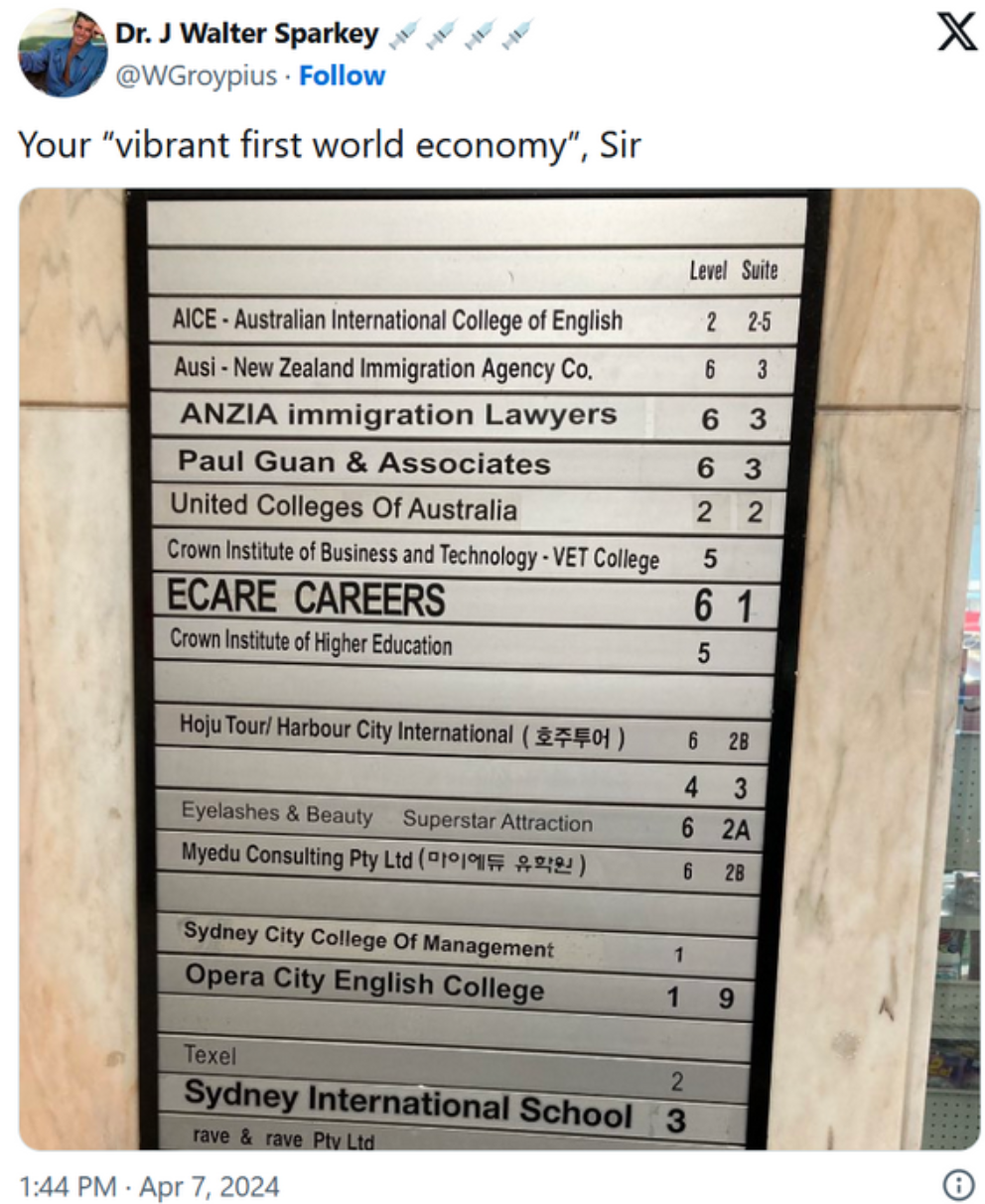Education Minister Jason Clare has confirmed that the federal government will specify limits on international enrolments at each of Australia’s 42 universities and potentially more than 1,000 vocational colleges.
Clare stated that he expected the caps to be calculated over the next three months, with an emphasis on limits at the institutional rather than course level. Course caps would be considered a “reserve power”.
Clare stated that the government was responding to universities’ concerns about the uneven impact of its student visa limits.
Integrity procedures that had “ramped up” in recent months have resulted in more international students at some universities and “a lot less” at others.
“A lot of universities have asked for this”, Clare said. “In particular, the smaller universities have said to me, ‘We’d prefer a different system where you set a level or a cap for us each and every year,’ and that’s what this legislation does”.
Clare also admitted that international education was “pretty much an unregulated sector”. While domestic enrolments were “effectively” capped by funding for university places, “it doesn’t work like that for international students at the moment”, he said.
“There’s a certain logic and common sense…that if we regulate the number of Australian students, we should do that also for international students”.

Mark Scott, Vice-Chancellor of the University of Sydney and Group of Eight Chair, attacked Labor’s student visa caps.
The University of Sydney has the highest concentration of international enrolments in Australia, comprising 57% of postgraduate enrolments and 46% of overall enrolments.
Hilariously, Jason Clare’s confirmation of international education caps comes as thousands of international students have been accused of cheating and paying others to do their work, with the University of Sydney impacted most heavily.
“The large-scale return of international students has reignited fears of a cheating black market linked to visa fraud, while forensic IT advances have helped investigators find more cheating students”, The SMH reported.
“The University of Sydney recorded a 1000% increase in serious academic cheating in two years”.
Associate Professor at Sydney University, Salvatore Babones, gave a more rational assessment of the situation in his book, “Australia’s Universities, Can They Reform“:
“Too often, and for too long, Australian governments have enabled university behaviours that broadly disserve Australia’s students and effectively defraud Australia’s taxpayers”, Babones wrote.
“Governments headed by both major parties have allowed (and even encouraged) universities to expand international student enrolments beyond all sound pedagogical limits”…
“They have applauded the universities’ international rankings success, despite its being achieved at the cost of degraded educational experiences for domestic students”…
“Instead of enabling the self interested behaviour of Australian universities, cutting a bit here and intervening a bit there, it should insist that universities deliver—first and foremost—a quality education for Australian domestic students”…
“Over the last two decades, many of Australia’s public universities have acted irresponsibly—in their bloated international student recruitment programs, in their unbridled pursuit of international rankings, in their don’t ask, don’t tell approach to Chinese influence, and in their outright exploitation of domestic students”, Babones wrote.
Babones elaborated on these concerns last month, noting that Australian universities’ concentrations of international students have reached truly absurd levels, which has degraded the educational experience for local students:
“Exploitation is running entire onshore courses specifically for international students, often as the price they must pay to access Australia’s low-wage labour market for convenience store clerks and Uber Eats drivers”
“When I arrived in 2008, Australia already had the most internationalized university system in the world. There had been a ten-year run-up in international student numbers to globally unprecedented levels. But things were only about to kick into high gear”.
“Since 2008, the number of international students at Australia’s public universities has doubled. In 2022 (the latest year for which data are available) Australian public universities were 30% international by student load. The numbers were 24% for undergraduate students and 48% for postgraduate students”.
“To put these numbers into perspective the single most internationalized public university in the entire United States (the University of Illinois) is only 23% international”.
“That’s right: the Australian system as a whole is more international than the most international public universities in America”.
Salvatore Babones, therefore, recommended in his book that caps be placed on international student numbers of 20% per course, 15% per university, and 10% from any one country.
We should also remember that Australia’s universities are non-profit entities that do not pay taxes (unlike other ‘export’ sectors). This is despite our universities acting like corporatised, profit-maximizing enterprises, with senior leadership groups earning excessive salaries.
Under this system, universities, rather than taxpayers, are ‘clipping the ticket’ and earning gigantic economic rents from Australia’s immigration system via student fees.
As a result, universities are privatising the benefits of record immigration while Australians—particularly renters—are socialising the costs.
Ultimately, Australia’s public educational institutions should exist to serve the needs of Australian students, not international students. The learning experience of local students must be paramount.
The government must also shut down the hundreds of dodgy private colleges that have mushroomed to exploit the student visa system for work rights and residency.

Finally, the federal government should impose a levy on international students to ensure that Australians receive a financial return from the trade, similar to how a sovereign wealth fund collects revenue from mineral exports.

